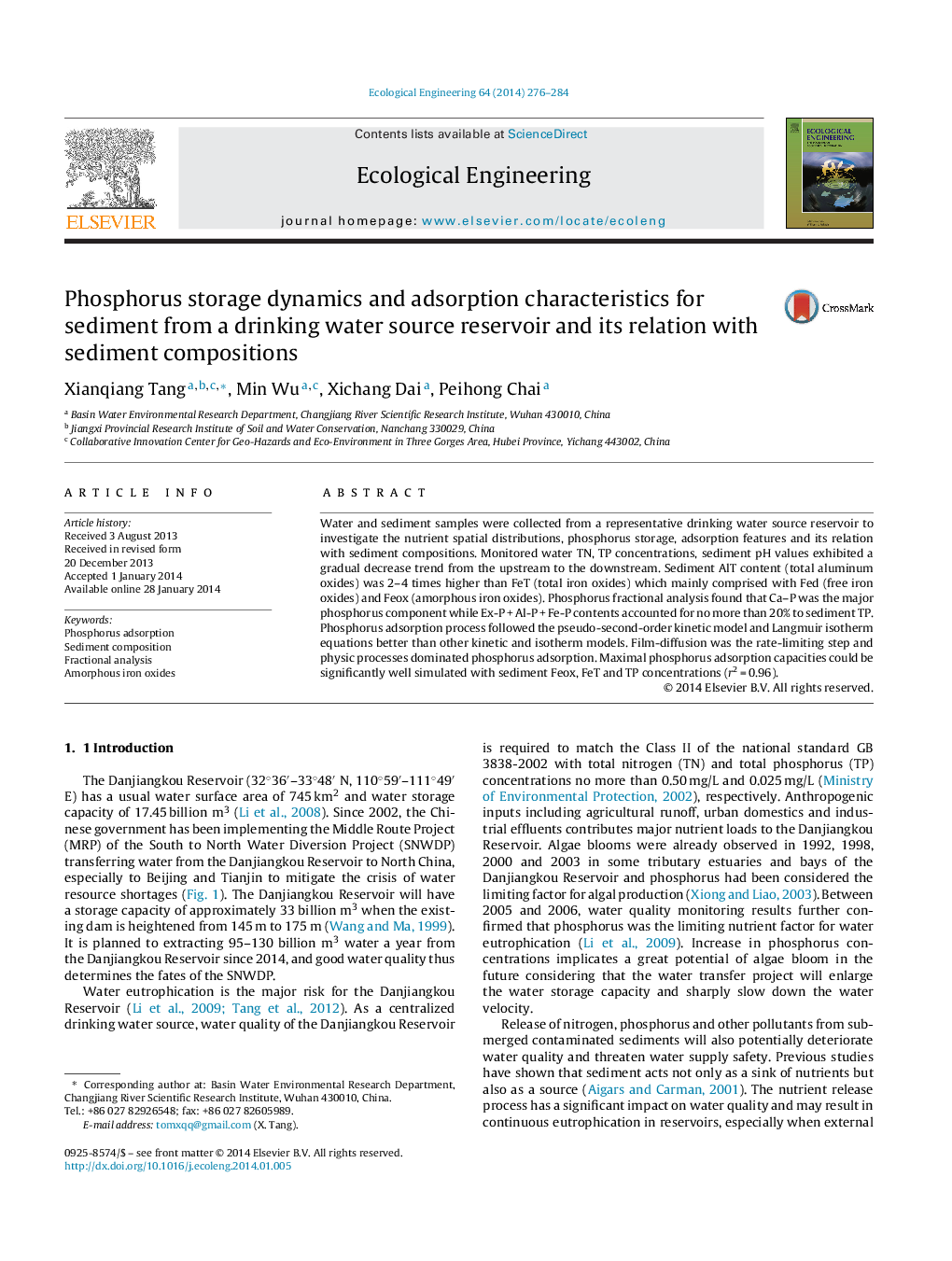| کد مقاله | کد نشریه | سال انتشار | مقاله انگلیسی | نسخه تمام متن |
|---|---|---|---|---|
| 4389589 | 1618035 | 2014 | 9 صفحه PDF | دانلود رایگان |
• Phosphorus adsorption is film diffusion limited and determined by physical process.
• Sediment iron fractions impacted phosphors storage and adsorption more significantly than aluminum fractions.
• Phosphorus adsorption capacity greatly related to active iron oxides and iron bound phosphorus contents.
Water and sediment samples were collected from a representative drinking water source reservoir to investigate the nutrient spatial distributions, phosphorus storage, adsorption features and its relation with sediment compositions. Monitored water TN, TP concentrations, sediment pH values exhibited a gradual decrease trend from the upstream to the downstream. Sediment AlT content (total aluminum oxides) was 2–4 times higher than FeT (total iron oxides) which mainly comprised with Fed (free iron oxides) and Feox (amorphous iron oxides). Phosphorus fractional analysis found that Ca–P was the major phosphorus component while Ex-P + Al-P + Fe-P contents accounted for no more than 20% to sediment TP. Phosphorus adsorption process followed the pseudo-second-order kinetic model and Langmuir isotherm equations better than other kinetic and isotherm models. Film-diffusion was the rate-limiting step and physic processes dominated phosphorus adsorption. Maximal phosphorus adsorption capacities could be significantly well simulated with sediment Feox, FeT and TP concentrations (r2 = 0.96).
Journal: Ecological Engineering - Volume 64, March 2014, Pages 276–284
